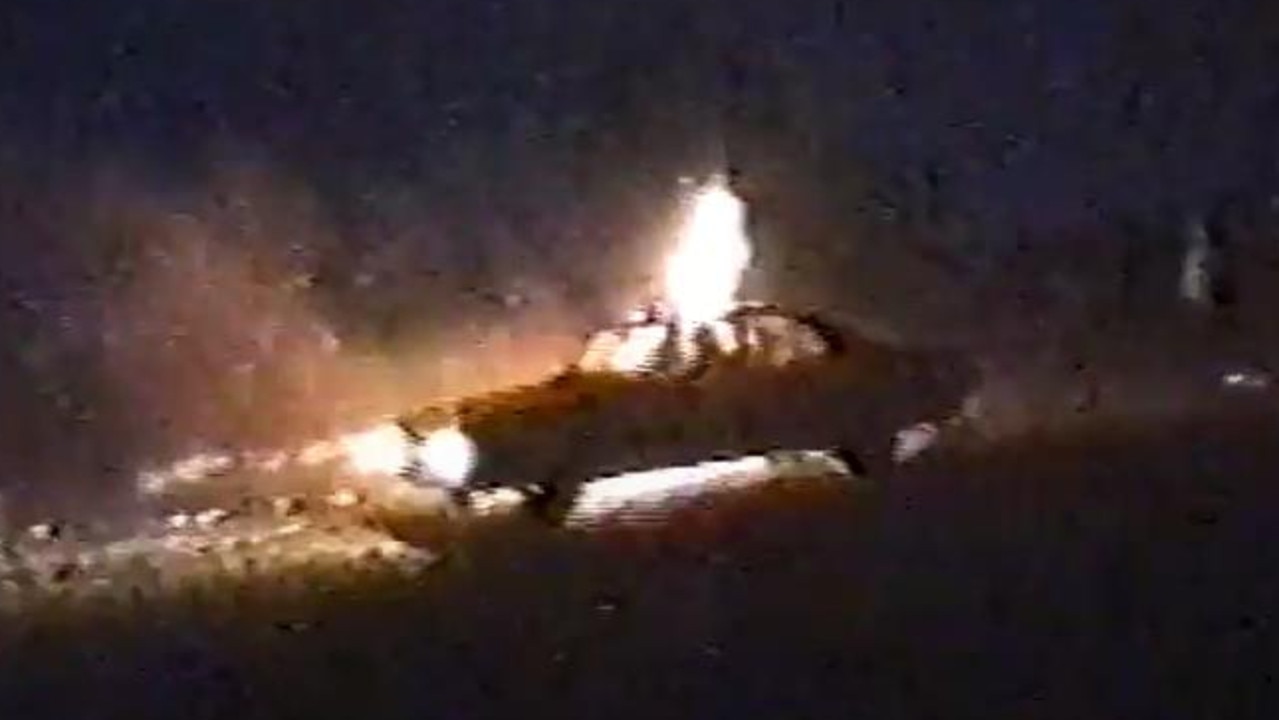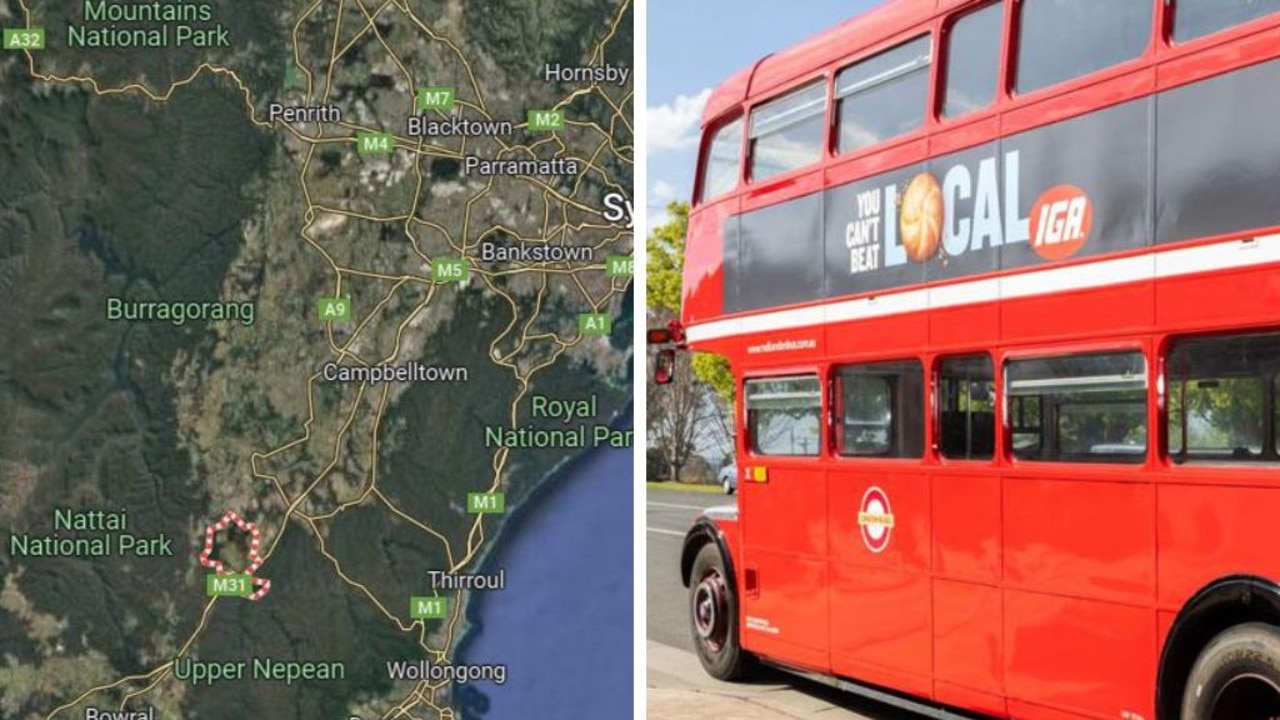Why Luna Park is Sydney's favourite park and ride
BARRY Oliver checks out Luna Park Sydney's harbourside fun fair as it celebrates a new lease of life.
EXPLOSIONS rip through the darkness, strobe lights flash, there's the occasional blood-curdling scream, contorted faces confront us at every turn and evil-looking characters appear from nowhere, just as quickly vanishing into the gloom.
It's a full-scale prison riot. Our challenge is to find our way out of this mayhem, which is proving no easy matter.
Our first effort leads to a dead end and an alarming encounter with a seriously disturbed inmate. Our conga line, hands on the shoulders of the person in front, does a 180-degree turn; a warden flashes his torch and shouts something indecipherable amid the babble and we file past a row of cells, flailing arms clawing at the cages. After 10 fumbling minutes we arrive at the exit, the door swings open and we emerge, blinking, into sunlight, to be greeted by the sight of Luna Park's stalls and sideshows in full cry. Talk about a sea change.
The Australian: Park and Ride »
Prison Break Live has just finished a six-month stint at the park. New attractions usually run during school holidays but it was decided to capitalise on the television show's popularity (it was licensed through Hollywood) and go for a longer time scale. "It was a bit of a test to see how it would go down and the public loved it," says marketing executive Jeremy Nance.
It's hard not to smile as you walk under Sydney's most famous face. But Luna Park's giant welcoming clown hasn't always been so friendly. Early versions – there have been eight since the 1935 launch – were a lot more sinister. "Half the experience is walking through that big mouth," Nance says.
The Face, in its different forms, has been ever-present, which is not something you can say about the teeth. In the 1970s, six went missing. University students were blamed but the culprits were never traced; the same goes for the missing molars.
Luna Park, on prime waterfront land at Milsons Point in North Sydney, has had what Nance calls, with considerable understatement, a chequered past. It has suffered numerous closures, faced fierce opposition from nearby residents, suffered a fire on its ghost train that claimed seven lives, and had rides bulldozed, burned and auctioned.
But Luna Park is nothing if not a survivor: on April 4 it celebrated the anniversary of its 2004 reopening, having been closed since 1996 following residents' complaints about the noise of its star ride, the Big Dipper, which was eventually shipped to Dreamworld on Queensland's Gold Coast (where it's still operating).
These days the park seems to enjoy better relations with nearby residents.
"We've got restrictions that we operate within," Nance says. "The people of Sydney are right behind the park and it's keeping the area available for them to come down and enjoy."
During the four years since reopening there have been 4.5 million visitors, the 36m-high ferris wheel, offering dress-circle harbour views, has clocked up more than 500,000 rotations and there have been at least 168 marriage proposals. The park is now protected by heritage status, along with its two oldest rides.
Nance stresses it's not a theme park but an amusement park. "We consider it a precinct. We're quite different from the theme parks on the Gold Coast."
OPEN AND SHUT CASE
Key dates in the life of Luna Park
October 4, 1935: Luna Park opens in Sydney on the site used for the construction of the Harbour Bridge. 1936: Admission charge is removed. 1969: An application to develop the site as a trade centre is refused. 1972: The park opens for year-round operation. (Previously it closed for three months in the winter.) June 9, 1979: A fire on the ghost train claims the lives of one adult and six children. The park is closed. 1981: Many of the original amusements and artworks are auctioned. 1982: Park reopens. Application to redevelop the site with high-rise towers refused. 1988: Park closes. 1990: The NSW government passes the Luna Park Site Act making the site crown land dedicated for public recreation, amusement and entertainment. January 1995: Park reopens. 1996: Park closes following Big Dipper restrictions. 1997: The precinct of Luna Park and its associated heritage items are classified and placed on the Register of the National Estate. April 4, 2004: Park reopens.
I'm reminded of a seaside funfair. "$5 cash, give it a bash," repeats the man running the High Striker, where customers use a hammer to send a scale soaring skywards (but never quite to the top). "Every little hitter wins a prize."
There's no such spruiking on another stall where all-comers have to toss balls into gaping, contorted mouths. Entertainers – clowns on stilts, dancers, jugglers – wander, or in some cases stagger, past. There's a special Showtime department where they are trained. Apparently the first thing that stilt walkers are taught is how to fall.
Historian-librarian Anne Doughty says that although Luna Park was originally modelled on a US amusement park, it now has a distinctly Australian flavour thanks to the work of Arthur Barton, artist-in-residence from 1935 to 1970, and the present holder of that title, Ashley Taylor.
Barton's playful work – his nickname was Art Barton – is most prominent in Coney Island, a so-called fun house that dates back to the park's beginnings. It's the most popular attraction, providing what Nance calls "simple fun, a departure from sitting at home with the PlayStation or watching a DVD. It's the part of the park that everyone seems to remember."
Well, it's hard to forget. Even the architecture is wacky: outside it's a mix of Moorish windows, Russian onion domes and what Doughty calls "an Aztec-looking thing". She describes it as "a pot-pourri of design elements that somehow manages to create an interesting building".
Barton continued the fun inside with some slapstick cartoon-like paintings. His Drunken Orchestra is a favourite with Doughty. The postcard humour is also reflected in The Mother-in-Law Miss, where a man deliberately misses a boxing punchbag in favour of a more tempting target.
The large mural on the back wall is known as his Sistine Chapel piece because of the time it took him to paint it. "As well as a fun place to be,
it's almost a gallery of popular art from the 1930s that hasn't been saved anywhere else. It's a living museum of art," Doughty says of Coney Island.
A lot of people would probably miss much of the art (though Doughty conducts history tours). They'd perhaps be too busy with the wooden slides, talking palmist, moving floors, spinning Joy Wheel (last one remaining wins), Barrels of Fun and crazy mirrors that do weird things to your body shape. You can even have your sex appeal rated (from frigid to wow-we but I can't vouch for its accuracy; (I'm apparently ice cold).
Doughty says fun houses were places with devices and amusements that enabled people to laugh at themselves as well as others. They go back as far as 1890 but few remain. She believes that this is the only one in Australia.
The Rotor – "Professor E. Hoffmeister's world famous scientific theatre" – dates back to 1951 and is the worst offender when it comes to making people throw up. It spins at 30 revolutions a minute, creating a 1 to 1.5 g-force, pinning riders to the wall. Nance reports he survived it without mishap. In fact, he has experienced every ride in the park. "You have to know your product, unfortunately. But some I've only done once, though there are some real thrill-seekers on the staff who go on rides all over the world."
A more recent addition is the vast Big Top, its truck entrance hidden by a sizeable Taylor mural. This entertainment venue, which holds up to 3000 people, was built for the reopening. It's soundproofed to an ear-shattering 120 decibels. There's so much insulation in the roof that the joke here is that it's lined with $100 notes. The much older Crystal Palace, which is the second original building (with Coney Island), holds 1300 and hosts smaller events such as wedding receptions and conferences. From the outside it looks like a stone chateau. Don't ask why.
Through the years there have been quite a few famous visitors, including a certain Prince Philip of Greece, now the Duke of Edinburgh, who disgraced himself in 1945, while on shore leave, when he was escorted out of the River Caves ride after breaking the rules by getting out of his boat.
There are about 600 staff, including casuals, and about a dozen maintenance workers who not only keep the rides in shape but have a whopping 25,000 lightbulbs to attend to. How many Luna Park workers does it take to change those? Sounds like a perfect subject for one of Barton's wacky paintings.



